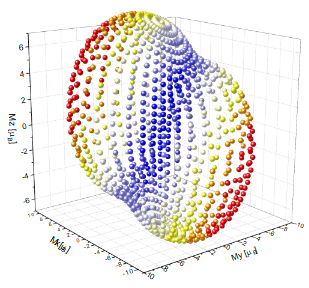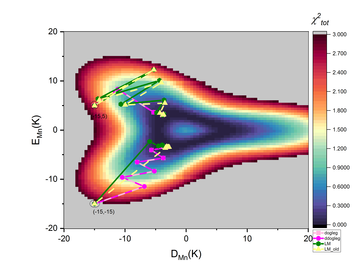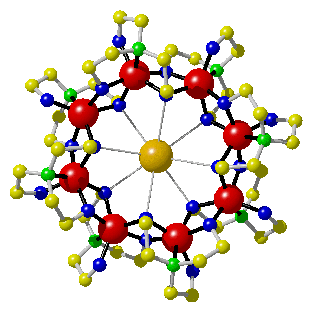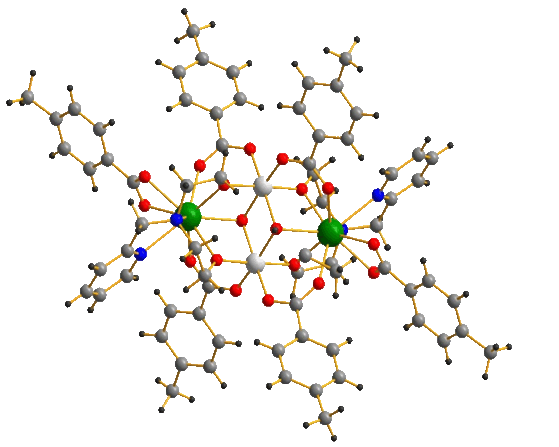Numerical Methods
The most promising SMMs used for this analysis contain Lanthanide metal ions. However, describing their magnetic properties require many parameters, leading to increased computational cost during simulation and fitting of experimental data .This, in turn, presents a significant challenge. To address this issue and enhance our comprehension and analysis of magnetic data from SMMs, different numerical methods have been developed within our C-based, in-house code called OwMag. These methods facilitate the analysis of powder samples and the extraction of Hamiltonian parameters from magnetization and susceptibility data.
 |
 |
Some of the numerical methods used to reduce the dimension of the system and therefore significantly reduce the computational cost of both simulation and fitting are the Effective Model Method and the Permutation Symmetry Method. The Permutation Symmetry Method is a group theoretical approach used to block diagonalize the Hamiltonian of the system into smaller blocks with a lower dimension than the original Hamiltonian which in turn reduces the computational cost.
To simulate the susceptibility and magnetization of SMMs, it is often required to have them in powder form rather than as single crystals. This in turn entails integrating over all possible sample orientations. The Romberg integration method, as illustrated in the picture on the left, is used for this purpose. In this method, magnetization is integrated over various spheres to account for the different orientations.
Exact diagonalization or Power method are also approaches used to diagonalize the hamiltonian and tackle the challenges of computational time.
To further improve the analysis of the magnetic data provided by SMMs, a computational approach known as Least-Squares fitting is employed. This method serves to identify the most suitable parameters for models, aligning them closely with actual observations.The fitting method introduced in OwMag is known as the Levenberg-Marquardt fitting method. Subsequently, it was tested and compared to various other methods using the GNU Scientific Library (GSL), which is a numerical library commonly used in C/C++ programming. The GSL library offers a wide range of tunable parameters, proving valuable for extensive testing of different fitting methods, including Dogleg, Double-Dogleg, Levenberg-Marquardt, and Levenberg-Marquardt with geodesic acceleration. This is showcased on the picture on the right provided above, where different methods were plotted on top of a Least-Squares backgound, revealing a distinct three-fold symmetry.
In addition to OwMag, we employ a variety of tools such as Python, Git, and Mathematica to perform calculations and enhance the research process. These tools not only contribute to the efficiency of our analyses but also enable the group of a well-organized workflow that can be easily traced, promoting transparency and reproducibility in our research endeavors.



